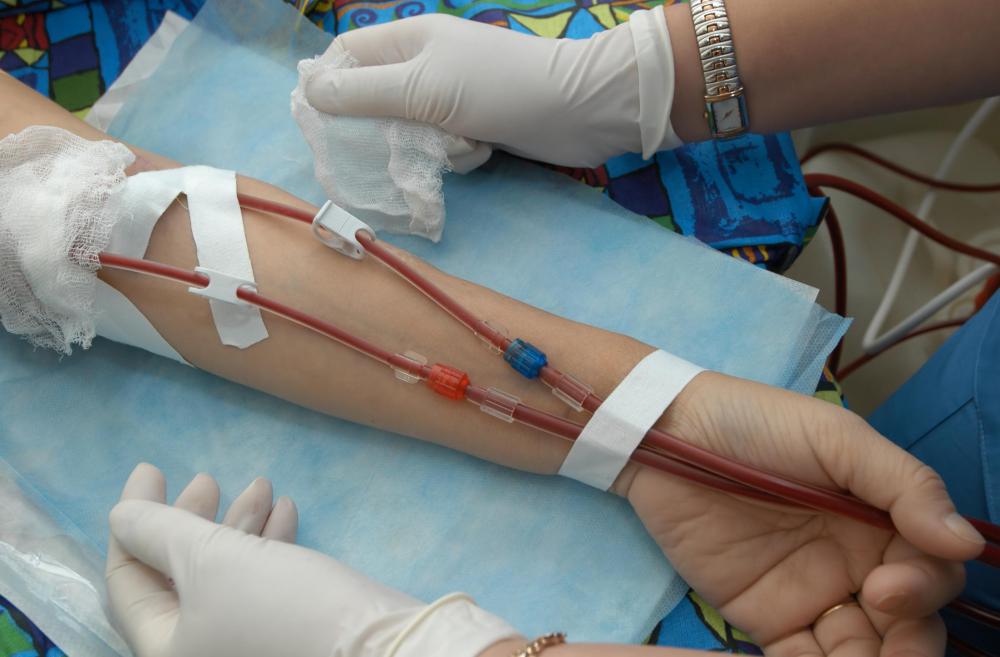At WiseGEEK, we're committed to delivering accurate, trustworthy information. Our expert-authored content is rigorously fact-checked and sourced from credible authorities. Discover how we uphold the highest standards in providing you with reliable knowledge.
What Are the Causes of Fever with Thrombocytopenia?
When fever develops with thrombocytopenia it usually indicates a bacterial or viral infection is present. Three forms of fever with thrombocytopenia stem from a deficiency in blood platelets that might cause red blood cells to die. Uncontrolled bleeding might develop, which is typically treated with steroids and blood transfusions.
Fever with thrombocytopenia classified as hemolytic-uremic syndrome (HUS) occurs more commonly in infants, young children, pregnant women, and mothers who recently gave birth. This disorder commonly starts as an intestinal infection that causes a sudden decline in the number of blood platelets. Usually, the first sign of this form of thrombocytopenia with fever appears as red spots called petechiae on the legs and unexplained bruising.

Hemolytic-uremic syndrome might also cause bleeding of the gums and nose, and produce blood in feces. In menstruating women, periods might become heavy and continue beyond normal menstruation cycles. Jaundice could set in, along with blood accumulating in the brain or intestines. The formation of clots in the kidneys represents the most common complication of fever with thrombocytopenia of this type. Symptoms typically become more severe as the number of platelets continues to decline, which might be treated with dialysis and steroids.

Thrombotic thrombocytopenic pupura (TTP) usually affects the central nervous system in adults, with symptoms appearing suddenly. Tiny blood clots might form throughout the body as platelets are used up. Clots traveling to the brain commonly occur from this form of fever with thrombocytopenia, leading to confusion, seizures, coma, or death. Profuse bleeding is not commonly present in this form of thrombocytopenia with fever.

TTP might also provoke irregular heart rhythm, kidney damage, and stomach pain. This disorder might come from a gene mutation that inhibits normal functioning of antibodies or from a bacterial infection. Up to 90 percent of patients with this form of the disorder die without several blood transfusions. Only about half of all patients diagnosed with TTP show signs of fever.

Idiopathic thrombocytopenia (ITP) with fever rarely occurs in adults and is linked to viral infection from unknown causes. Acute attacks of this disorder might appear in children and resolve without treatment. When it develops in adults, it usually represents a chronic infection that gets worse over time. Adults suffering from thrombocytopenia with fever might respond to steroid treatment or blood transfusions.

Platelets in blood cause cells to stick together as a clotting mechanism. If the bone marrow produces too few platelets, or platelets are used faster than they are produced, thrombocytopenia might develop. This disorder might also be sparked by some medication, leukemia, anemia, and autoimmune disorders.
AS FEATURED ON:
AS FEATURED ON:


















Discuss this Article
Post your comments